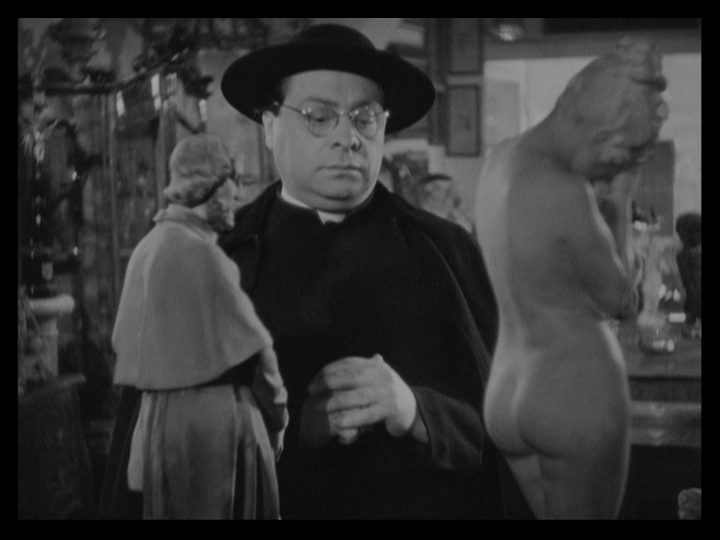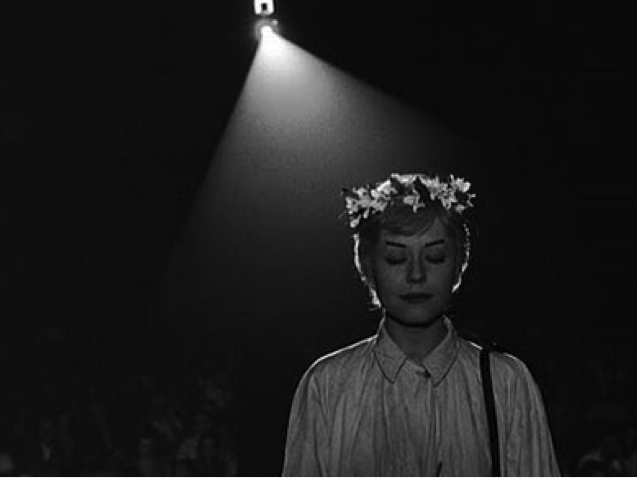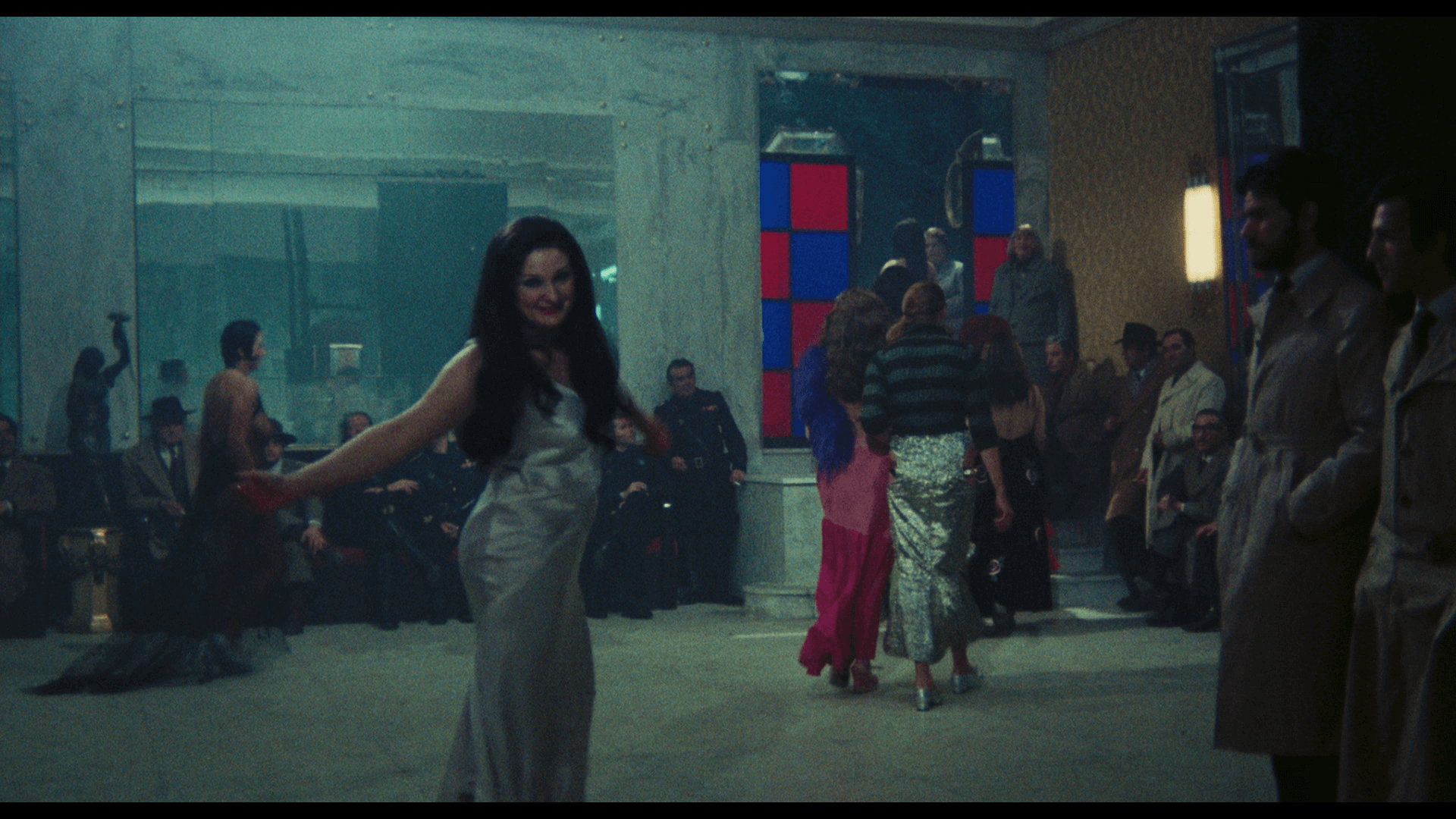A sphinx named Federico
By Heitor Capuzzo
Federico Fellini started work as screenwriter in Italian film productions in 1942, one year before the fall of Benito Mussolini leadership in Rome.
At that time the roots of the upcoming neorealist film movement were already cultivated by several Italian film directors as Luchino Visconti, Mario Soldati and Vittorio De Sica among others. The international impact of Rome Open City (1945) and Paisà (1946) by Roberto Rossellini was essential for the starting of a new era in the Italian post World War II cinema.
Although the Italian neorealist movement produced a list of films with different styles, approaches and visions, they shared one point in common: understanding the process underlining the destruction of Italy and the urgent need to approach the reconstruction of the country.
Many forces were involved in that complex time of tensions and struggles. Separatist armed movements revealed that the possibilities of a civil war were on the table. At same time, the Italian infrastructure was basically destroyed by the war and many people were literally starving.
The hard dialogue between conflicted ideologies had to be established and the Catholic Church played a fundamental role in that process. Mediating those opposite visions, the Catholic Church embraced the human condition as a priority.
The Italian neorealism was shaped under that complex debate, finding common points in a civilisation with a millenary heritage that faced many moments of destruction and reconstruction in its history.
Either as a screenwriter or assistant director, Federico Fellini participated in many important Italian neorealist films, working mainly with Roberto Rossellini, Pietro Germi and Alberto Lattuada.
It is possible to detect a discreet Fellini touch in those films. There are some irreverent moments, imbued with a kind of anarchic humour. A good example of this is found in Rome Open City (1945), where the priest enters an antique store. While he waits alone for a secret delivery, before his very eyes, stands a sculpture of a nude woman body. It is a clear moment of conflicting emotions: the character, in spite of his ordained status, faces his human condition.

Fellini’s approach to humanism is based on his personal experiences blended with fictional narratives. There are moments alternating between the grotesque and sublime that suggests that they are faces of the same coin. This juxtaposition of sublime and grotesque is a key strategy to afford a three-dimensional representation of life. It can be considered the basis of Fellini’s poetry.
His first films are based on real locations. If the landscapes reminds of the Italian neorealism aesthetic, the atmosphere is highly subjective. More than just presenting the geographical locations, the landscapes become extensions of the characters feelings. The friends in I Vitelloni (1953) are familiar with their provincial city. There are few possibilities to escape from that sweet routine of peace. Their drunken moments in the main square at late nights are always followed by walks on empty and dark streets where nights are longer than days.

Some point in that routine brings the group to the seafront. That is the limit: to trespass the “sea barrier” requires their squarely facing the challenges of their future.

One important subject in Fellini’s films is the characters struggle for a possible transition between their lives in the province and their dream of moving to a dynamic metropolis. In Fellini’s films the emotional distance between Rimini (the city in which he was born) and Rome is bigger than the geographical one. The feeling of loss at some point can become a painful trauma.

In La Dolce Vita (1960), there is a sequence where the elegant reporter meets his father (who lives in a small city) in a nightclub in Rome. Although they want to exchange their feelings cheerfully, an abyss lies between them. They are “strangers when they meet.”

The way that big cities shape its inhabitants is open territory to romanticise the past. Amarcord (1974) is structured as a memory album, an idealistic travel time to an imaginary past in the provincial Rimini, reconstructed according to Fellini’s poetry. This artificial reconstruction of memories alerts us that we are consuming a representation that seems to match the facts based on real observations, but which has in reality been manipulated according to the vision of a seducing liar. That fragmented mosaic reveals impressions about the past as the result of a rehearsal of our own memories.
When the characters of Amarcord take the boats out to the open sea to wait for the transatlantic SS Rex, that imaginary reconstruction touches us deeply. In reality, it is but a collection of lies. SS Rex never passed through Rimini. Those characters were loosely based on stereotypes of different people, and the entire Rimini, including the sea and SS Rex, was staged in the Cinecittà studio in Rome.

In Fellini’s films the concept of real is the real of the screen. Few sequences were able to touch so deeply the public as this particular one. Certainly there is more than one possibility to explain this phenomenon, but it would be a frustrated exercise. Poetry was not created to be explained.
There is a sense of incompleteness in the way that Fellini’s proposed his poetic vision of cinema. The gaps are not there to be minded. They are the subjective results of his life experience, something vague that is metaphorically parallel to a circus experience.
A circus programme is a collection of artistic numbers mixing jugglers, trapezes, trained animals, magic, tightropes, clowns and musicians, all inside an arena covered artificially by a tent that imitates the sky.
There is a grotesque side in the circus experience: the animals suffer; the artists risk their lives for the sake of show in cheap exploitation; the fake happiness of the clowns can be easily detected during the intermissions; and the ballerinas are overly made-up.
But this absence of refinement does not break the magic of the show. The public knows exactly what to expect and sometimes a sublime moment comes out of the gaps. It can be either a facial expression of one of the clowns or a well rehearsed number. Circus can be a metaphor about our human condition, a narrow line between splendour and ridicule.
The fascination of Fellini with the circus is also a good starting point for the immersive experience of his works. Where they appear, he keeps to one main revelation about the clowns. He embraced the archetypical construction of the clowns’ universe as divided in two types: the White clowns with their obsession to attain success in their competition to imitate the other circus artists. They are always irritatable and authoritarian, disconnected with the public. The second is populated by the Augusto clowns who are not that stupid as they appear. They are colourful, happy and energetically connected with the public. But of course, they are always distracted, failing in everything that they are trying to do.
Both clowns are, again, different faces of the same coin: a unit that was split and condemned to look for their reunification, perhaps only possible at infinity. They are still travelling eternally in the labyrinths of our poetry.

The dichotomies in Fellini’s universe are more than possible strategies for to address human condition. They are like a passport to enter the limbo, a fuzzy territory where the gaps are the content.
One of his main films is 8 ½ (Otto e Mezzo, 1963). Perhaps it is the most crucial art work introducing the public in the labyrinths of the artistic creative process. Nothing is conclusive in the narrative. A famous film director needs to start to shoot his upcoming production, but he has no idea what this new film could be. In his mind, there are fragments of his life in an allegoric representation blended with fictional moments. Everything is seductive, visually refined, but asking for some possible unit. The main character faces the same burden as the two clowns.

The gallery of characters in Fellini’s films is one of the highlights of his legacy. The exotic figures were inspired by his original drawings. His past experience as cartoonist helped to shape his style. Beside the emphasis on grotesque representations, his gallery also presents sublime moments.
Certainly Gelsomina, the female character of La Strada (1954) is the most celebrated one. Under the powerful performance of Giulietta Masina, this character was responsible for the international recognition of Fellini in the film scene.
Gelsomina reminds us of a female version of the famous tramp created by Chaplin. There is always a space for a lonely tear in the funny sequences as well a discreet smile during the sad moments.


Another subject explored by Fellini in his films is the dichotomy sacred-profane. In Nights of Cabiria (1957), a prostitute tries hard to survive, believing that some miracle can rescue her from the cruel reality.
In despair Cabiria tries to follow a religious procession. The collective commotion suggests in her mind a moment of purification. Light and shadow frame her delirium where a prostitute can be sanctified.


In Roma (1972), Fellini alternates a sequence with nude prostitutes in a brothel during the post World War II era, with a procession in the contemporary days that is dedicated to the new clothes for the cardinals. Both parades reflect a city in continuous process of decadence, so far from its glorious past.


In Satyricon (1969), Fellini proposes a vision of Rome before the impact of Christianity. The Roman Empire is in decadence. The heavy heritage of the glorious times of Rome is a burden for the new generation. In this case the sacred-profane dichotomy is metamorphosed to the conflict between heritage and new horizons.


It is possible to consider Fellini’s films as variations of the same subject. His works suggest a fragmented mosaic with many missing pieces. Our human condition is exposed with tenderness, passion, fury, rebelliousness and also fragility.
Fellini is still an indecipherable enigma. His legacy continues to inspire several generations of filmmakers. His name has become an adjective that qualifies poetry.
Professor, School of Art, Design and Media
Nanyang Technological University
All images are from the private collection of Federico Grandesso.
